
Kinuyo Tanaka was a Japanese actress and film director. She had a career lasting over 50 years with more than 250 acting credits, but was best known for her 15 films with director Kenji Mizoguchi, such as The Life of Oharu (1952) and Ugetsu (1953). With her 1953 directorial debut, Love Letter, Tanaka became the second Japanese woman to direct a film, after Tazuko Sakane.
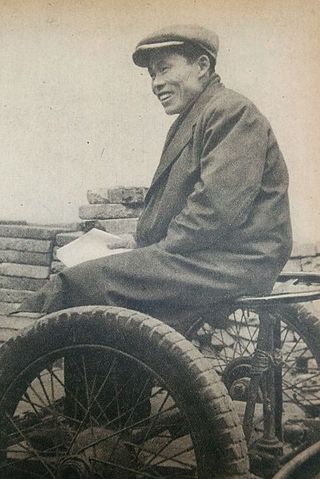
Kaneto Shindō was a Japanese film director, screenwriter, film producer, and writer, who directed 48 films and wrote scripts for 238. His best known films as a director include Children of Hiroshima, The Naked Island, Onibaba, Kuroneko and A Last Note. His screenplays were filmed by directors such as Kenji Mizoguchi, Kōzaburō Yoshimura, Kon Ichikawa, Keisuke Kinoshita, Seijun Suzuki, and Tadashi Imai.
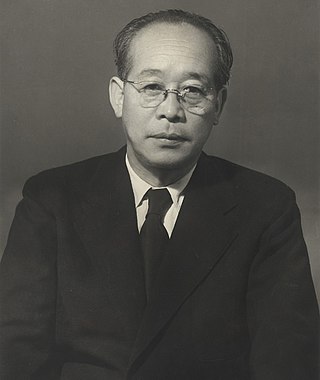
Kenji Mizoguchi was a Japanese filmmaker who directed roughly one hundred films during his career between 1923 and 1956. His most acclaimed works include The Story of the Last Chrysanthemums (1939), The Life of Oharu (1952), Ugetsu (1953), and Sansho the Bailiff (1954), with the latter three all being awarded at the Venice International Film Festival. A recurring theme of his films was the oppression of women in historical and contemporary Japan. Together with Akira Kurosawa and Yasujirō Ozu, Mizoguchi is seen as a representative of the "golden age" of Japanese cinema.

Motoko Yano, better known as Machiko Kyō, was a Japanese actress who was active primarily in the 1950s. Considered one of Japan's first sex symbols and one of its greatest screen actresses, Kyō is best known for her critically acclaimed work with directors Akira Kurosawa, Yasujirō Ozu, Kenji Mizoguchi, Mikio Naruse, Kon Ichikawa, Teinosuke Kinugasa, Kōzaburō Yoshimura, Shirō Toyoda and Hiroshi Teshigahara, appearing in films such as Rashomon, Ugetsu, Gate of Hell, Street of Shame, Floating Weeds, Odd Obsession and The Face of Another.

Ugetsu is a 1953 Japanese period fantasy film directed by Kenji Mizoguchi starring Masayuki Mori and Machiko Kyō. It is based on the stories "The House in the Thicket" and "The Lust of the White Serpent" from Ueda Akinari's 1776 book Ugetsu Monogatari, combining elements of the jidaigeki genre with a ghost story.

A Geisha or Gion Festival Music is a 1953 Japanese drama film directed by Kenji Mizoguchi, centred on the geisha milieu in post-war Gion, Kyoto. It is based on a novel by Matsutarō Kawaguchi.

Kenji Mizoguchi: The Life of a Film Director is a 1975 Japanese documentary film on the life and works of director Kenji Mizoguchi. It was produced, written and directed by Kaneto Shindō.
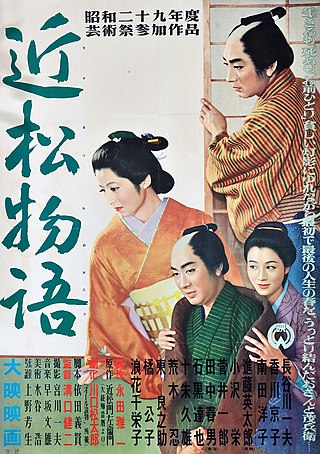
The Crucified Lovers, also titled A Story from Chikamatsu, is a 1954 Japanese drama film directed by Kenji Mizoguchi. It was adapted from Monzaemon Chikamatsu's 1715 bunraku play Daikyōji mukashi goyomi.

The Woman in the Rumor, also titled The Crucified Woman or The Woman of the Rumor, is a 1954 Japanese drama film directed by Kenji Mizoguchi.

Princess Yang Kwei Fei is a 1955 Japanese historical film directed by Kenji Mizoguchi. It was a co-production between Daiei Film and Shaw & Sons, Hong Kong. It is one of Mizoguchi's two colour films, the other being Tales of the Taira Clan, made the same year.

Kōzaburō Yoshimura was a Japanese film director.
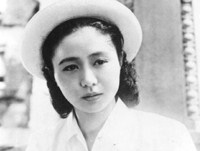
Nobuko Otowa was a Japanese actress who appeared in more than 100 films between 1950 and 1994.

Masaichi Nagata was a Japanese businessman and served as president of Daiei Film. The self-proclaimed creator of Gamera, he produced the kaiju's second film Gamera vs. Barugon, with the remainder of the Showa Gamera films produced instead by his son Hidemasa Nagata.
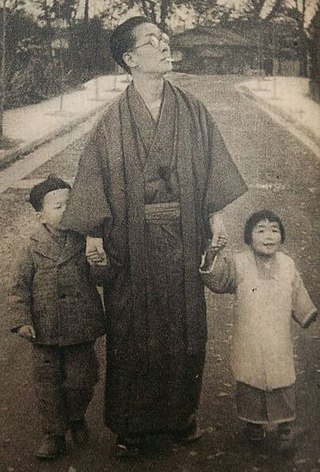
Yoshikata Yoda was a Japanese screenwriter. He wrote for more than 130 films between 1931 and 1989. He is most famous for his work with Kenji Mizoguchi. He wrote for the film Bushido, Samurai Saga, which won the Golden Bear at the 13th Berlin International Film Festival.
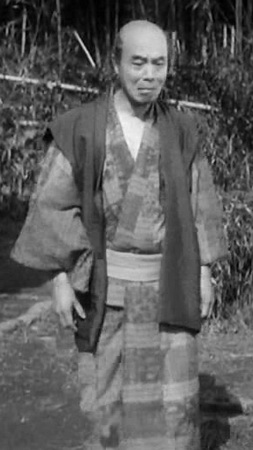
Ichirō Sugai was a Japanese actor and film director who appeared in more than 300 films in his 45 years spanning career, working with directors such as Kaneto Shindō, Kenji Mizoguchi and Kōzaburō Yoshimura.

Sadako Sawamura was a Japanese stage and film actress who appeared in more than 200 films between 1935 and 1976.
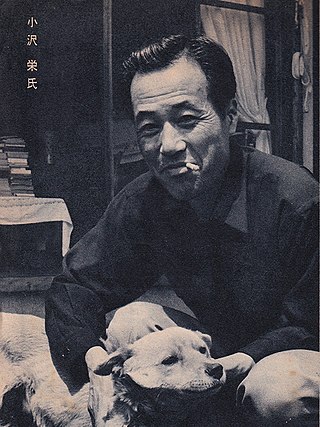
Eitarō Ozawa, also credited as Sakae Ozawa (小沢栄), was a Japanese film actor and stage actor and director. He appeared in more than 200 films between 1935 and 1988, directed by notable filmmakers such as Kenji Mizoguchi, Mikio Naruse, Keisuke Kinoshita and Kaneto Shindō.
Jōji Ohara was a Japanese cinematographer.

Sanae Takasugi was a Japanese film and television actress. She starred in over 80 films, directed by notable filmmakers like Kenji Mizoguchi, Yasujirō Ozu, Mikio Naruse, and Keisuke Kinoshita.

Kinzō Shin was a Japanese stage and film actor. Between the early 1930s and late 1980s, he appeared in over 80 films by directors such as Masaki Kobayashi, Kon Ichikawa, Kaneto Shindō, Tadashi Imai and Yasuzō Masumura.



















